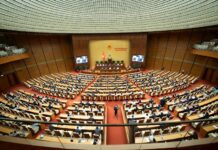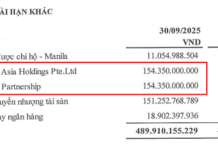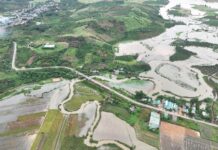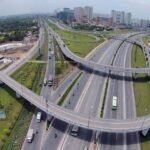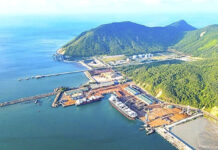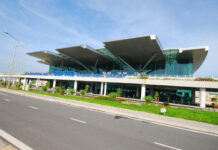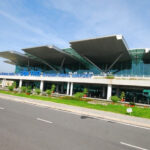250 Ambitious Projects and Plans
On August 19, 250 construction projects and investment plans were simultaneously inaugurated and launched across 80 locations in Vietnam to celebrate the 80th anniversary of the August Revolution and National Day (September 2).
According to the Government Portal, these 250 projects, located in 34 provinces and cities, have a total investment of VND 1,280,000 billion. This includes 89 projects that were inaugurated and 161 that were launched.
Specifically, there are 59 transport infrastructure projects, 44 civil and urban projects, 57 industrial projects, 36 technical infrastructure projects, 22 social housing projects, 6 agricultural and rural development projects, 3 cultural and sports projects, 12 education projects, 1 defense project, and 10 healthcare projects.
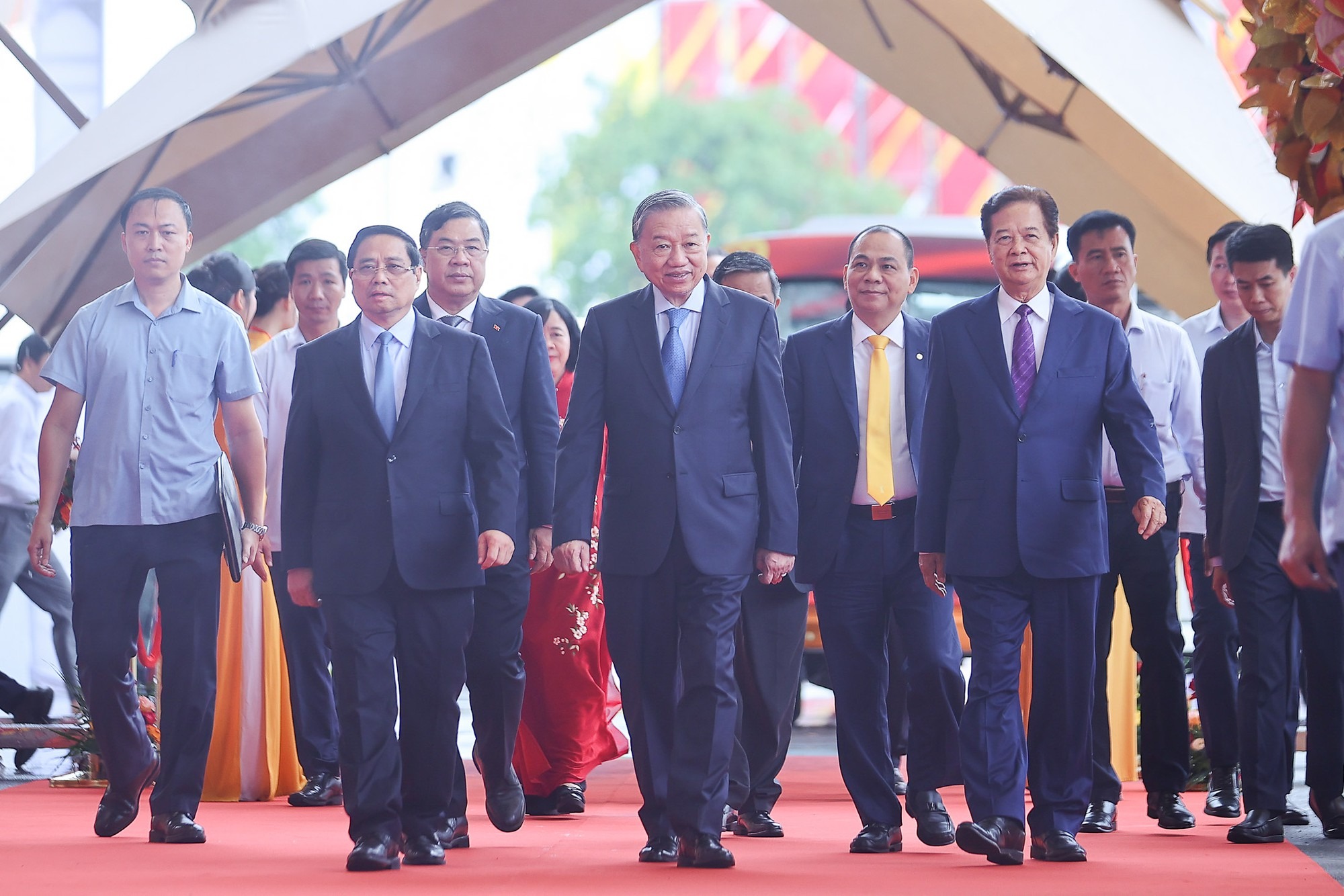
General Secretary To Lam, Prime Minister Pham Minh Chinh, and former Prime Minister Nguyen Tan Dung attend the ceremony – Photo: VGP/Nhat Bac
Thai newspaper Nation has called this a highly ambitious national development plan, targeting an 8% GDP growth rate by 2025 and maintaining double-digit growth in the following years. The ultimate goal is to turn Vietnam into the “new tiger” of Asia and a high-income nation by 2045.
General Secretary To Lam has declared the beginning of a “new era”, marking the most extensive economic reforms in decades.
Vietnam’s rapid rise is evident in Hanoi’s per capita income, which has increased from $1,200 in 1990 to $16,385 today due to its transformation into a global production hub.
Is Thailand Losing Its Competitive Edge?
According to the Nation, Nonarit Bisonyabut, a senior researcher at the Thailand Development Research Institute (TDRI), warned that Vietnam’s progress could be a concern for Thailand. Previously, Thailand had a national strategy to become a high-income country by 2036 under Prime Minister Prayut Chan-o-cha, but this ambition has weakened due to the COVID-19 pandemic and other crises.
He stated that before COVID-19, Thailand’s growth potential was 3.6% annually. After the pandemic, this number decreased to 2.7-3%, pushing back the high-income goal to 2088–2093, 7–12 years later than initially planned.
He argued that Vietnam is implementing reforms, such as restructuring its administration to improve efficiency and boost economic development. In contrast, Thailand, despite being aware of the issues, has been slow to act.
“Looking ahead, China and South Korea are prioritizing Vietnam over Thailand. These two nations are the winners in the digital era – China rises with the US as an AI superpower. If Thailand does not reform seriously, it will lose its competitive edge and eventually fall behind Vietnam,” concluded Nonarit.
Kriengkrai Thiennukul, President of the Federation of Thai Industries (FTI), told Krungthep Turakij newspaper that Vietnam is undergoing significant adjustments, taking advantage of changes in US tax policies and global trade regulations.
“Vietnam understands that the world has changed, so they have to rely more on themselves and push for structural reforms,” Kriengkrai remarked. “They start with administrative reforms, cutting down ministries and costs. They know that without restructuring, they will lose in global competition. This is a good example that Thailand should follow,” he added.
Poj Aramwattananont, President of the Thai Chamber of Commerce, acknowledged Vietnam’s heavy investment in infrastructure as a strategy to maintain growth and cope with Trump-era tariffs.
He recognized Vietnam’s efforts to attract investment through infrastructure development but affirmed that Thailand remains attractive due to its strengths, such as its central position in the CLMV region, its role as a bridge between two oceans, its robust manufacturing and export sector with a complete upstream-midstream-downstream supply chain, and its orientation towards expanding new industries.
“However, investors are still cautious due to the lack of clear policies,” Poj added.
“Catalyst for Change: Empowering Vietnam to Bridge the Gap and Engage in the Global Value Chain”
The inaugural collaboration forum brought together over 50 senior leaders from government, academia, and industry to chart a course for Vietnam’s entry into the global semiconductor race.
“Institutional Refinement for the Semiconductor Industry: Ensuring Energy and Human Capital”
The announcement, Directive 439/TB-VPCP, underscores the imperative for ministries and sectors to collectively address key bottlenecks in infrastructure, institutions, human resources, and energy. By doing so, and by actively promoting international cooperation and localizing supply chains, Vietnam’s semiconductor industry can achieve a breakthrough and ascend to new heights.







